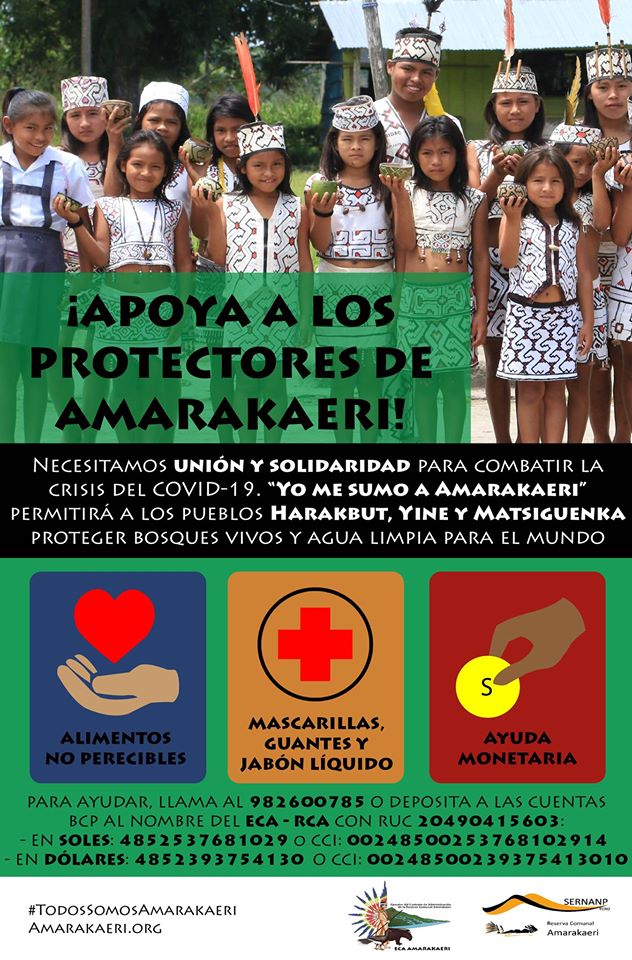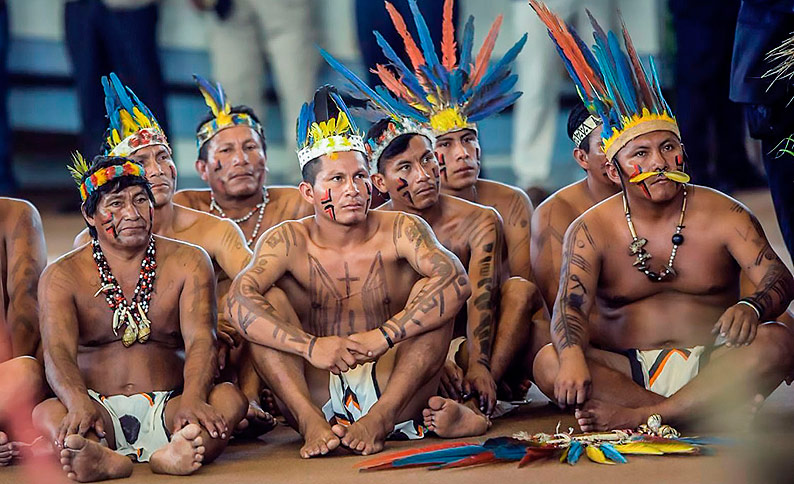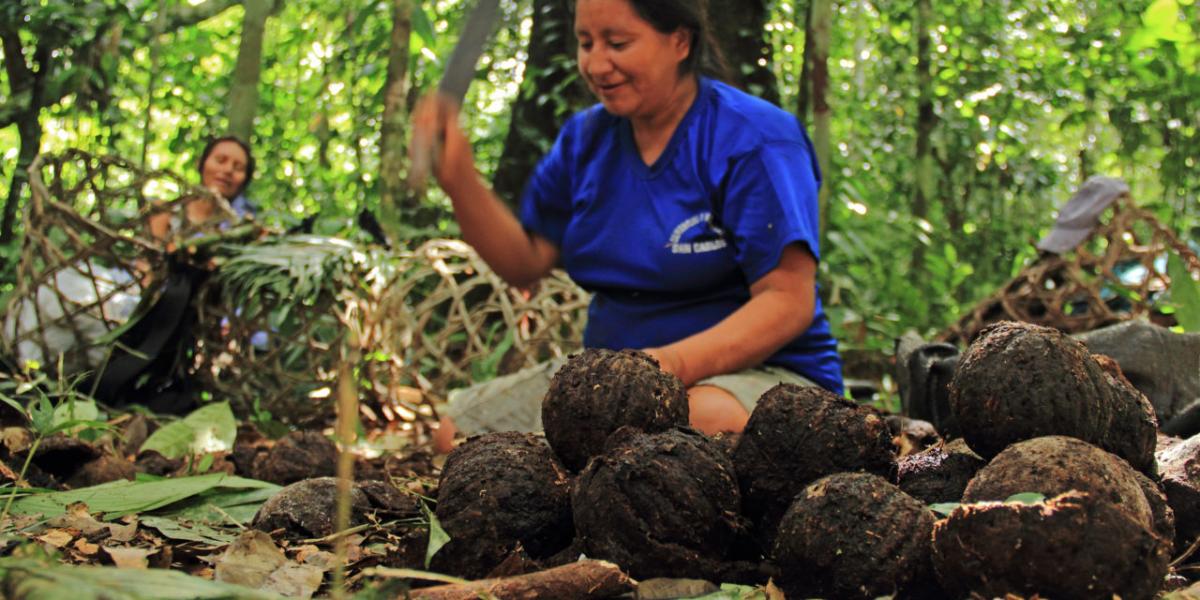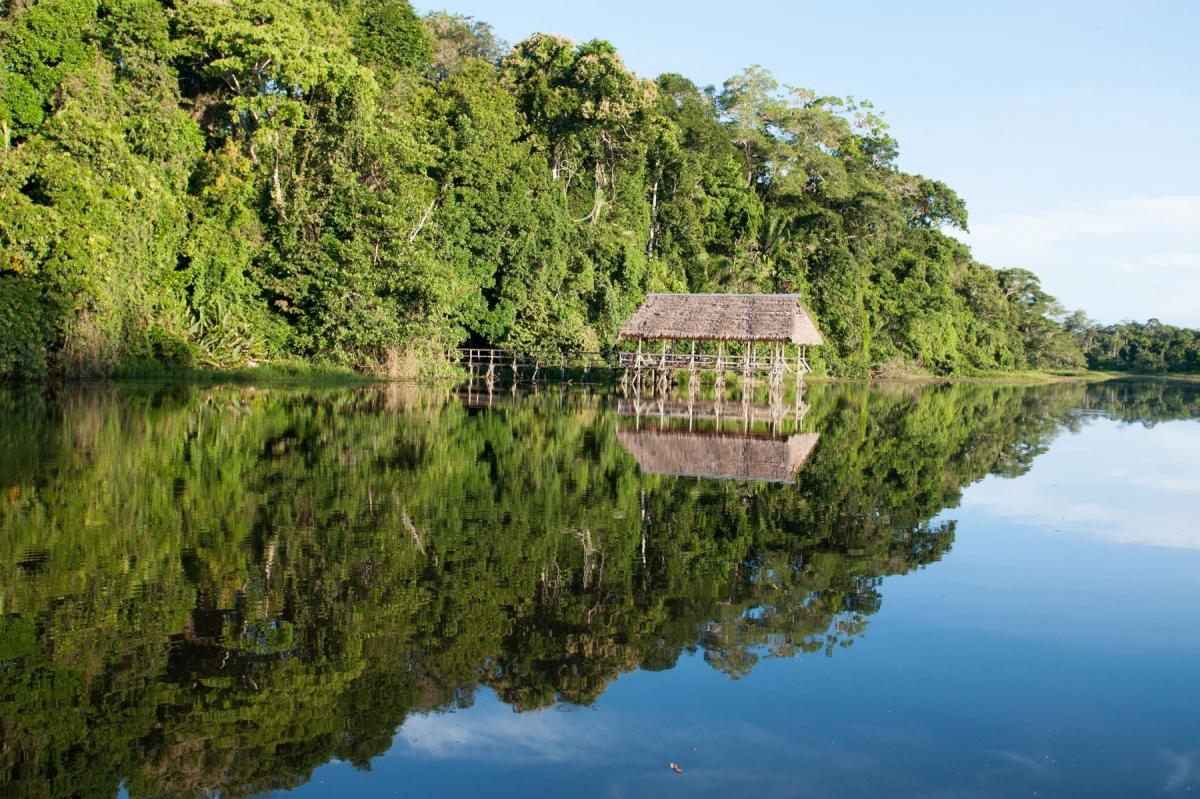Amarakaeri, an IUCN Green List pioneer, seeks solidarity and support in the Amazon
The Amarakaeri Communal Reserve is an inspiration as one of the first two indigenous co-managed Green List sites in the world, along with Arakwal National Park in Australia. However, the Reserve has been hit by a major catastrophe: COVID-19. Since March the Amarakaeri have closed their community and gone into voluntary isolation. This is especially challenging given the local needs for outside health and other basic services, but the community are confident in their own resilience and the integrity of their natural resources.
The Harakmbut people have inhabited the forested Andean foothills in the Amazon basin for aeons. However, their co-management of their territory with the State Peruvian Protected Areas Agency, SERNANP, only began in 2002 through the Reserva Comunal Amarakaeri (RCA).
The vision behind the creation of the Communal Reserve was the Native Federation of Madre de Dios and Tributaries (FENAMAD) and the Amarakaeri Communal Reserve Pro-Recognition and Management Committee. Both FENAMAD and RCA are IUCN members.
The idea of ‘pro-recognition’ is one that encouraged the RCA leaders, with the help of ANECAP, to later seek IUCN Green List certification. This was achieved in 2018, the first site in Peru and the first indigenous co-managed reserve in the Amazon.
The Green List certification is full recognition that the ‘Reserva Comunal’ model is successful. It certifies that indigenous communities are more than capable of delivering nature conservation of the highest standard, recognized in equal measure for the contribution of their territories to social and cultural values and wellbeing.
However, the Green List evaluation process has also highlighted the significant challenges that the RCA faces on a daily basis. The principal threats are external – illegal artisanal gold mining, and its destructive environmental and social impacts; and proposed road construction, which threatens to carve up the integrity of the territory and the larger Madre de Dios landscape.
The RCA is under ‘watch-list’ through the ongoing IUCN Green List process. Any further impact from these and other threats would result in a loss of Green List status, pending further remedial action and review. Alerts have been raised by local stakeholders, for both issues. Indeed, the Peruvian Expert Assessment Group (EAGL) and the Green List auditors (Assurance Services International) flagged the need for a conditional review after the first 12 months of certification.
Initially, boosted by the IUCN call for further review and validation of the site’s Green List status, a SERNANP-backed campaign to desist illegal mining activities proved successful. Remote-sensing, such as through the MAAP project, confirmed that the gold-seeking impacts had been curtailed by January 2020, and would be closely monitored.
This month, June 2020, SERNANP and the RCA will review the status and report.
However, the Reserve has been hit by another major catastrophe: COVID-19. Since March the Amarakaeri have closed their community and gone into voluntary isolation. This is especially challenging given the local needs for outside health and other basic services, but the community are confident in their own resilience and the integrity of their natural resources.
The chaos caused by COVID-19 has also pushed the mining issue to the fore again. With the community in isolation, and government services stretched, illegal access to the territory by gold-seekers has taken place – only this time with an added risk of contamination to the Amarakaeri people as well. The local market for gold has jumped at this time, encouraging more and more miners to attempt to access the forests.
With this backdrop Amarakaeri is seeking solidarity and support. The community have launched a campaign for assistance and solidarity, including a flier and a video.
IUCN is fortunate to have a joint project collaboration with SERNANP, ANECAP and the Gordon and Betty Moore Foundation. The project, ‘Fair and effective protected and conserved areas in the Amazon’ will support improved conservation practice and recognition by applying the IUCN Green List Standard to at least 20 important sites across Peru, Colombia, Bolivia, Ecuador and Brazil.
Within the frame of the overall project, Amarakaeri are pioneers and mentors, and invited to consolidate their success and share their lessons with other communities and territories across the region, including other Communal Reserves such as Yanesha and Machiguenga. For now, IUCN is supporting Amarakaeri in some basic needs in their fight against COVID-19, as well as working with SERNANP and the Peruvian Green List EAGL to help evaluate the impact of the mining and seek more political and governance action to help resolve the major threats.
IUCN is also calling on like-minded organisations, individuals and agencies to support Amarakaeri at this time.
Here is their manifesto call for support in English:
"Help the protectors of Amarakaeri!
We need unity and solidarity to fight the COVID-19 crisis!
Our ‘I am with Amarakaeri’ campaign will help the Harakmbut, Yine and Matsigenka communities preserve living forests and clean water for the world.
We need:
- Non-perishable food items
- Masks, gloves, soap and sanitizer
- Financial support (please see bank details or get in contact)"
Please get in touch with them, visit the Facebook campaign page, and provide any help you can offer!
James Hardcastle
Programme Developer,
IUCN Protected Areas Programme







